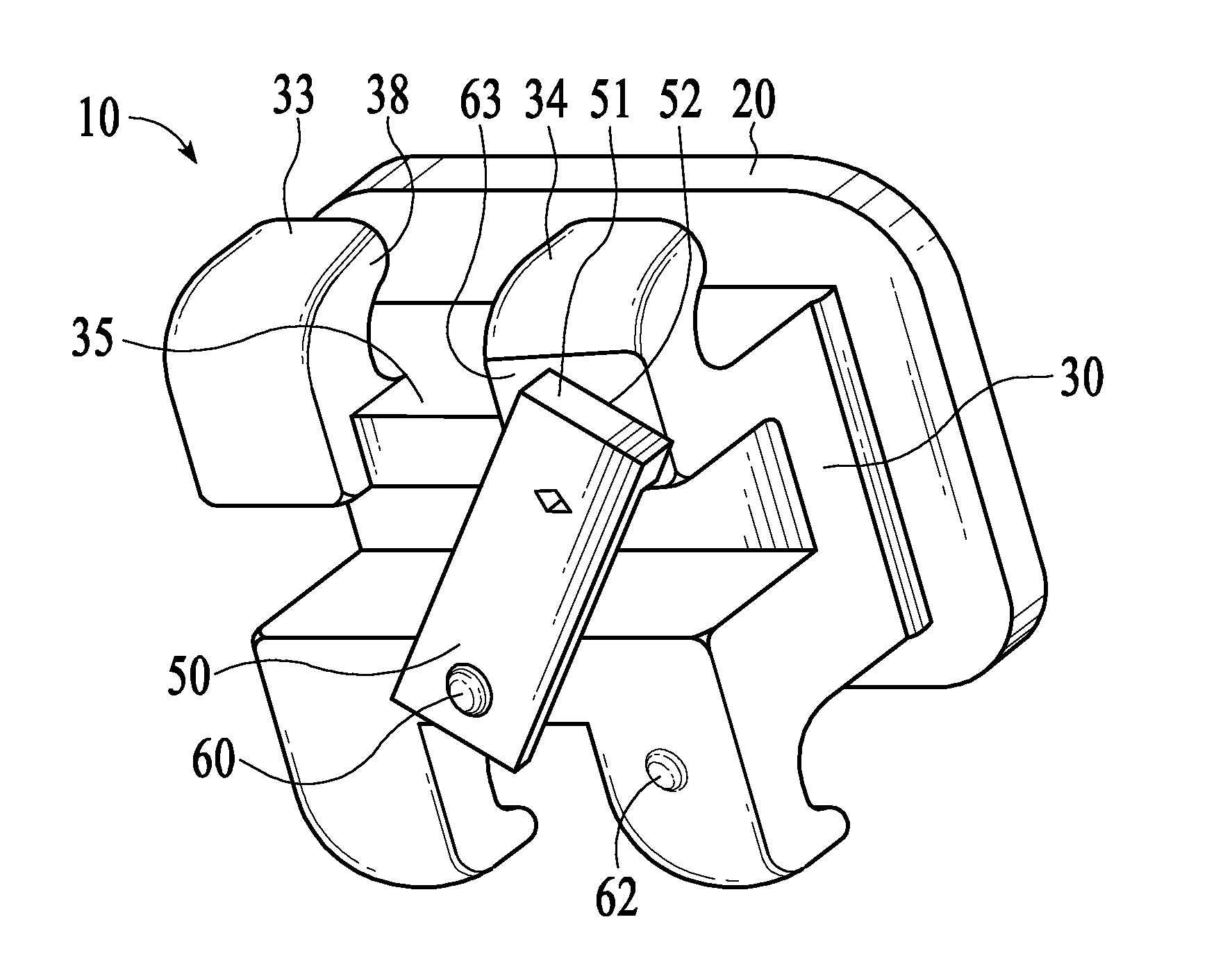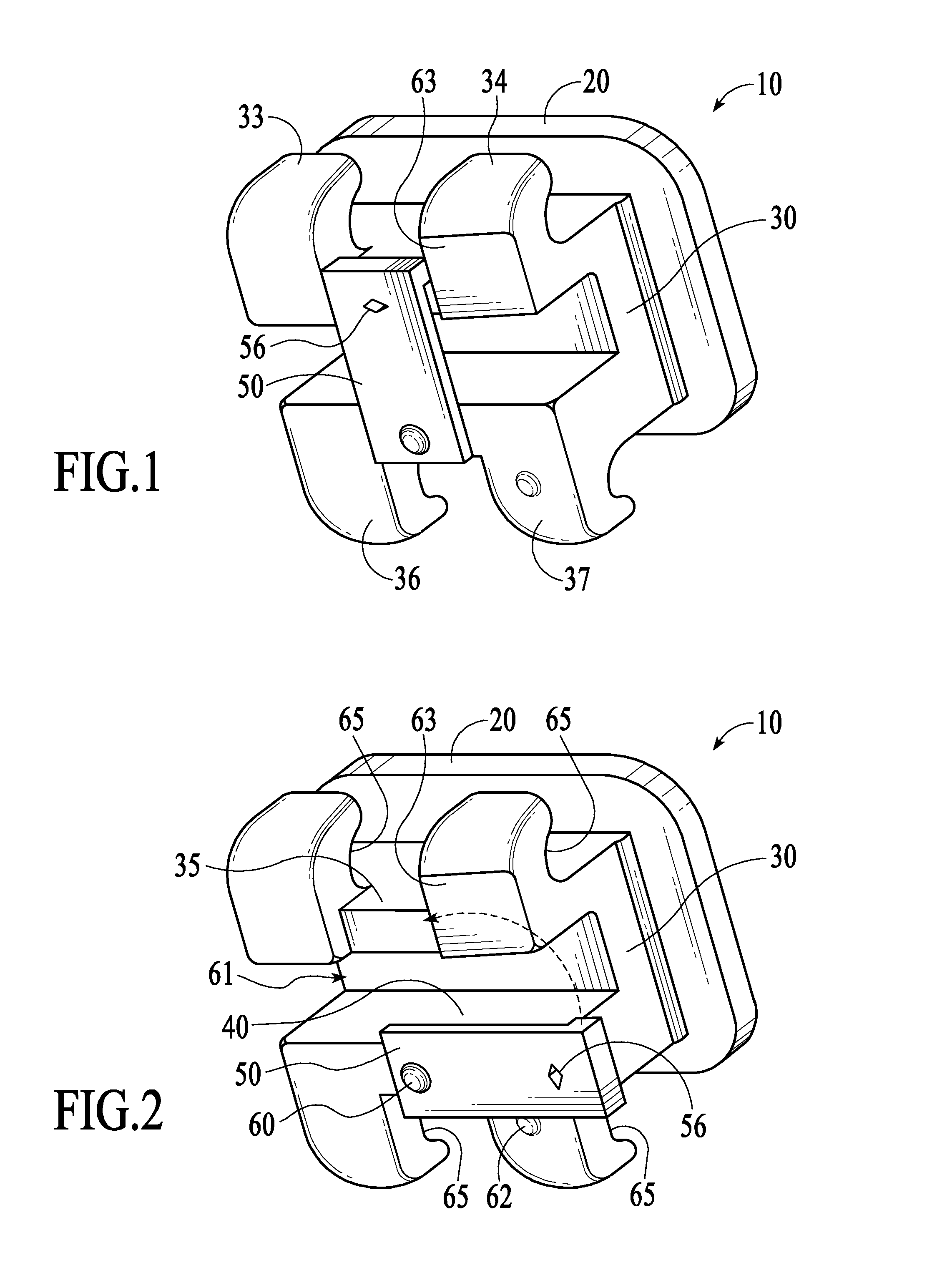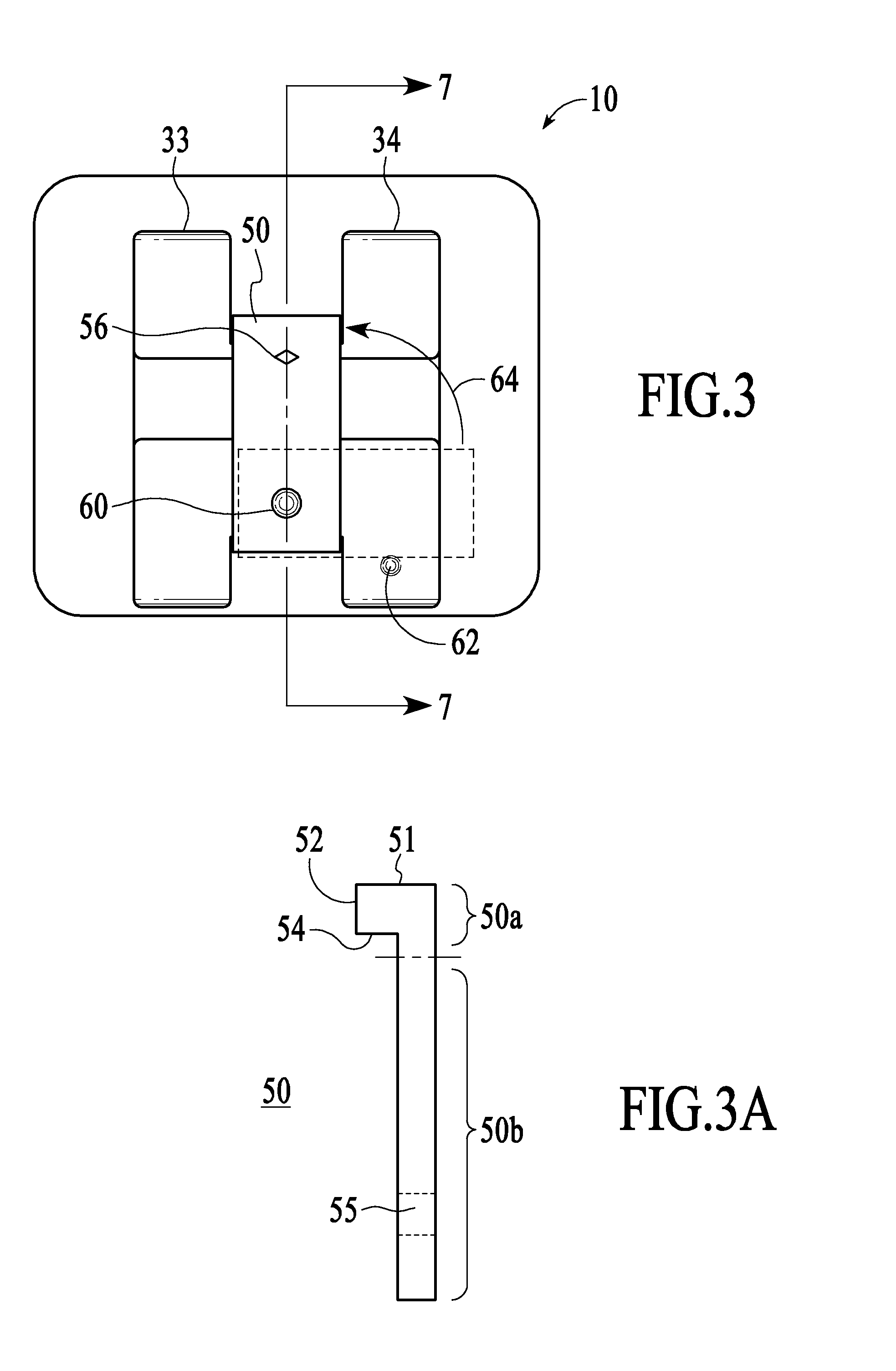Self-ligating bracket with universal application
a self-ligating, universal technology, applied in the field of orthodontic brackets, can solve the problems of large time-consuming and laborious archwire installation, large area of food particles likely to be trapped in the archwire, and the small size of the ligature or ligating module, so as to reduce the size of the bracket, and reduce the irritation
- Summary
- Abstract
- Description
- Claims
- Application Information
AI Technical Summary
Benefits of technology
Problems solved by technology
Method used
Image
Examples
Embodiment Construction
[0041]Details of the illustrated orthodontic bracket are intended to be interpreted as being merely illustrative and are not to be taken as being restrictive of the practical combinations of such features within the scope of this disclosure and the claims which follow.
Orientation
[0042]The following terms are used in this description to facilitate interpretation of the illustrations.
[0043]An anterior surface is directed buccally in relation to the supported tooth. A posterior surface is directed lingually in relation to the supported tooth.
[0044]Superior is toward the occlusal plane. Inferior is toward the gingival plane. Transverse is parallel to the occlusal plane. Upright is parallel to the gingival-occlusal plane. Height is the bracket dimension between the gingival and occlusal planes.
[0045]A leading edge is the mesially directed side surface of the bracket assembly. A trailing edge is the distally directed side surface of the bracket assembly.
[0046]FIGS. 1 and 2 are perspective...
PUM
 Login to View More
Login to View More Abstract
Description
Claims
Application Information
 Login to View More
Login to View More - R&D
- Intellectual Property
- Life Sciences
- Materials
- Tech Scout
- Unparalleled Data Quality
- Higher Quality Content
- 60% Fewer Hallucinations
Browse by: Latest US Patents, China's latest patents, Technical Efficacy Thesaurus, Application Domain, Technology Topic, Popular Technical Reports.
© 2025 PatSnap. All rights reserved.Legal|Privacy policy|Modern Slavery Act Transparency Statement|Sitemap|About US| Contact US: help@patsnap.com



